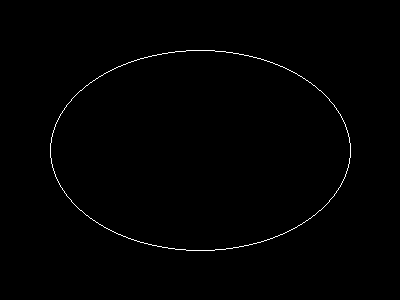This is an optimised and bug fixed version of nojer at yahoo dot com's rotatedellipse function. I've changed it so that the arguments are compatible with imageellipse. See notes on imagearc for original version.
<?php
function rotatedellipse($im, $cx, $cy, $width, $height, $rotateangle, $colour, $filled=false) {
// modified here from nojer's version
// Rotates from the three o-clock position clockwise with increasing angle.
// Arguments are compatible with imageellipse.
$width=$width/2;
$height=$height/2;
// This affects how coarse the ellipse is drawn.
$step=3;
$cosangle=cos(deg2rad($rotateangle));
$sinangle=sin(deg2rad($rotateangle));
// $px and $py are initialised to values corresponding to $angle=0.
$px=$width * $cosangle;
$py=$width * $sinangle;
for ($angle=$step; $angle<=(180+$step); $angle+=$step) {
$ox = $width * cos(deg2rad($angle));
$oy = $height * sin(deg2rad($angle));
$x = ($ox * $cosangle) - ($oy * $sinangle);
$y = ($ox * $sinangle) + ($oy * $cosangle);
if ($filled) {
triangle($im, $cx, $cy, $cx+$px, $cy+$py, $cx+$x, $cy+$y, $colour);
triangle($im, $cx, $cy, $cx-$px, $cy-$py, $cx-$x, $cy-$y, $colour);
} else {
imageline($im, $cx+$px, $cy+$py, $cx+$x, $cy+$y, $colour);
imageline($im, $cx-$px, $cy-$py, $cx-$x, $cy-$y, $colour);
}
$px=$x;
$py=$y;
}
}
function triangle($im, $x1,$y1, $x2,$y2, $x3,$y3, $colour) {
$coords = array($x1,$y1, $x2,$y2, $x3,$y3);
imagefilledpolygon($im, $coords, 3, $colour);
}
?>
imageellipse
(PHP 4 >= 4.0.6, PHP 5, PHP 7)
imageellipse — Draw an ellipse
Opis
imageellipse
( resource
$image
, int $cx
, int $cy
, int $width
, int $height
, int $color
) : boolDraws an ellipse centered at the specified coordinates.
Parametry
-
obraz -
Zasób obrazu, zwrócony przez jedną z funkcji tworzących obrazy, taką jak imagecreatetruecolor().
-
cx -
x-coordinate of the center.
-
cy -
y-coordinate of the center.
-
width -
The ellipse width.
-
height -
The ellipse height.
-
color -
The color of the ellipse. A color identifier created with imagecolorallocate().
Zwracane wartości
Zwraca TRUE w przypadku powodzenia, FALSE w
przypadku błędu.
Przykłady
Przykład #1 imageellipse() example
<?php
// Create a blank image.
$image = imagecreatetruecolor(400, 300);
// Select the background color.
$bg = imagecolorallocate($image, 0, 0, 0);
// Fill the background with the color selected above.
imagefill($image, 0, 0, $bg);
// Choose a color for the ellipse.
$col_ellipse = imagecolorallocate($image, 255, 255, 255);
// Draw the ellipse.
imageellipse($image, 200, 150, 300, 200, $col_ellipse);
// Output the image.
header("Content-type: image/png");
imagepng($image);
?>
Powyższy przykład wyświetli coś podobnego do:

Notatki
Informacja:
imageellipse() ignores imagesetthickness().
User Contributed Notes 3 notes
simon_nuttall at hotmail dot com ¶
17 years ago
julian ¶
19 years ago
if you want to display an ellipse in the upper left corner of an image, you can easily calculate the corresponding cx and cy values. this example will draw an ellipse having the same width and height as the image.
<?php
$ellipse_width = 100;
$ellipse_height = 200;
$ellipse_cx = ($ellipse_width / 2);
$ellipse_cy = ($ellipse_height / 2);
$img_x = $ellipse_width;
$img_y = $ellipse_height;
$img = imagecreate($img_x, $img_y);
$bg = imagecolorallocate($img, 255,255,255);
$ellipse_color = imagecolorallocate($img, 0, 0, 0);
imageellipse($img, $ellipse_cx, $ellipse_cy, $ellipse_width, $ellipse_height, $ellipse_color);
header("Content-type: image/png");
imagepng($img);
imagedestroy($img);
?>
agentyoungsoo at hanmail dot net ¶
21 years ago
When you wana use "ImageEllipse" function
in under GD 2.0.2 version, you can use "ImageArc" like bellow
----------------------------------------------------
$file_name = "test.png";
$screen_x = 300;
$screen_y = 200;
$x1 = $screen_x / 2;
$y1 = $screen_y / 2;
$radius = 30;
$image = ImageCreate($screen_x, $screen_y);
$black = ImageColorAllocate($image, 0,0,0);
ImageArc($image, $x1, $y1, $radius , $radius , 0, 360, $black);
ImagePng($image, $file_name);
ImageDestroy($image);
----------------------------------------------------